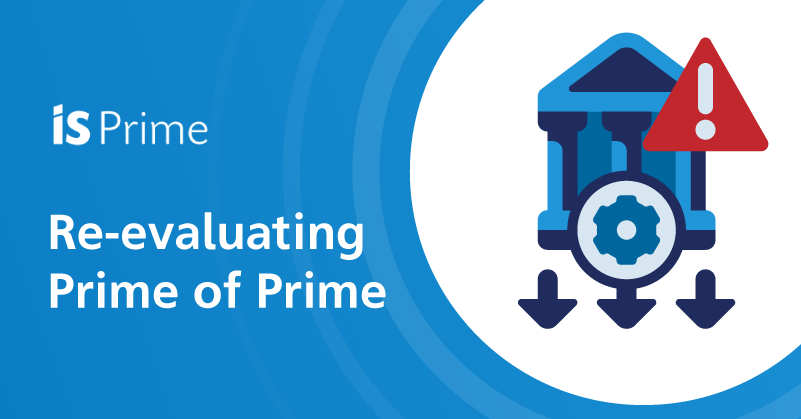Re-evaluating Prime of Prime

In the last year we have seen a dramatic fall in interest from our clients and prospects, particularly retail brokers, in “True Prime of Prime” offerings , i.e. where a broker uses a Prime of Prime (PoP) purely as a credit intermediary and has ‘direct’ relationships with Tier1 Liquidity Providers (LPs).
Whilst “True PoP” offerings may seem like the panacea for all broker ills, there are many pitfalls in using such services.
To the detriment of many clients of such institutions, these issues do not become apparent until significant time, money and effort have been expended in setting up the relationship. We previously discussed the subject with our article, “True Prime of Prime adds no value at all”, but I’d like to re-explore this, specifically looking at liquidity and technology.

The value that a PoP should add to a broker is more than just providing access to LPs. In fact, using a PoP that purely offers credit intermediation using off the shelf technology is something that can have a huge adverse impact on your business as a retail broker. But why is this?
Aggregation is, at its very basic level, a simple process but doing this well is extremely complicated, particularly when connecting to multiple direct/Tier 1 LPs. If this is not done right then the relationships you have with your LPs, and your pricing as a whole, will suffer.
As P&L explored in their article in February 'retail flow is not easy to price', there is a common misconception that retail flow loses money and is therefore soft, but this could not be further from the truth. Whether because of large bursts of trades from social and/or copy trading strategies (which we recently discussed in our blog) or because of HFT’s masquerading as retail Expert Advisors, a large proportion of trading from the retail market can be very directional and if not handled correctly, can be extremely damaging to your LPs.
Even if a proportion of your flow is benign, without the technology and expertise necessary to effectively profile, segment and route that flow, it can appear extremely sharp to LPs, particularly if HFTs are bundled together with less toxic flow.
Aggregation and routing
Who your LPs are – and how you aggregate them – is another important factor. For example, the mixing and matching direct & anonymous LPs Tier 1 banks and ECNs can hurt LPs due the market impact of an HFT market-maker spraying the market with a proportion of a large order, rather than holding risk. This will damage the true liquidity providers i.e. those that seek to internalise orders.
Routing rules are a much underestimated factor when creating aggregations and if not set correctly, will cause LPs to devalue and downgrade your flow. One of the most basic and most overlooked points here is the issue of sweepable vs non-sweepable feeds, which may not matter so much if your average trade size is below 100k, but if more institutional (or quasi-institutional) flow comes into the mix and trade sizes increase, or even if one or two clients are trading in large size, this can cause huge damage to LPs.
An equally important factor is the inbound spreads from LPs themselves. We often hear the ill-informed statement that “all LPs are the same” or the misunderstanding that a provider will price one venue/client the same as another, but in reality the pricing you receive is directly related to the quality, and of course quantity, of the flow you are sending to the LP. In this ever-increasingly quantitatively-driven marketplace, relationships only go so far. Whilst they may get you in the door to a Tier 1 provider, if your flow is on balance losing them money, then their spreads will widen over time as they seek to protect themselves.
Capacity, latency and flexibility
Having the correct setup is the key to success or failure and there are a number of factors that should be considered when looking at how to do this:
Many technology providers and “PoP brokerages” simply do not have the tools, the relationships, or the expertise in place with which to do so and without this you are likely to see your liquidity, the service provided to your end clients, and by extension your volumes, deteriorate over time.
As part of this, another often overlooked issue is capacity - both the capacity to process the sheer volume of quotes received from LPs and the capacity to deal with the huge numbers of trades from clients.
To put some numbers on it, an LP may send 150 updates per second across 100 instruments and to create a viable liquidity stack a PoP would usually look at around ten Tier 1 LPs. Combined, this means your systems would need to process, aggregate, and route 150,000 ticks a second in - most importantly - a timely manner. That is also assuming a single aggregation and a single stream for each LP. Many providers will stream two or more feeds and, if you are creating different liquidity pools for your clients then this figure rises exponentially.
Any latency in this process causes a late, and therefore inaccurate, quote to be sent to your clients which, at best, can cause a rejection or slippage and at worst can lead to serious losses on your book.
Your aggregator, at the same time, will need to be able to process, route and execute thousands of trades a second. IS Prime has stress tested its systems to over 10,000 trades a second, and regularly will receive upwards of 5,000 trades a second over economic releases and news events.
Both of these pressures can cause serious latency within systems - something we have seen from many off-the-shelf third party technology platforms used by our clients, and such issues can have far-reaching consequences.
Also, by using such technology, ‘True POPs’ have extremely limited flexibility in what they can offer to brokers. Whilst it may seem that you are getting “direct access” to a banking relationship, in reality this will effectively be an “A, B or C feed” depending on the profile of your flow, with final option being to turn you off.
Wrapping it all up
In summary, if something seems too good to be true, it often is. The “True POPs” out there are offering a solution that has been shown, in the long term, to be to the detriment of your overall trading experience due to a combination of tainted relationships, off the shelf technology and high cost.
Whilst it is easy for us to comment on this in an article, the numbers speak for themselves when comparing the quality of IS Prime’s pricing, execution, service and market-leading costs compared with other offerings.
To learn more about IS Prime and our products and services, please feel free to reach out:







